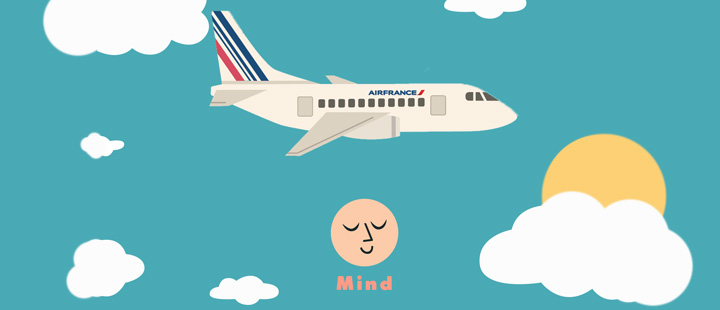We had been flying to Madrid from Hong Kong with a layover in Paris’s Charles de Gaulle Airport. The purpose of our journey was to attend the conference “1st World Encounter Teresian Mysticism and Interreligious Dialogue: Theravada Buddhism and Teresian Mysticism – Meditation and Contemplation Pathways to Peace,” which was held from 27–30 July at the International Centre of Teresian and Sanjuanist Studies of the University of Mysticism in Avila, Spain.
As with many other airlines, Air France seats have a TV screen attached to the back of all seats, and I was browsing through the program for some in-flight entertainment. Although as a monastic, searching for entertainment might go against my conventional spiritual practice, this habit of searching for movies and songs helped me to relax, apart from meditating.
But this time I was astonished to see a clip that invited us to discover the benefits of mindfulness meditation practice via the mind app program. The program consists of twelve guided mindfulness meditations – six for children and six for adults – with corresponding videos for concentration and serenity onboard long-haul flights.
The six meditation programs for children were taken from Eline Snel’s book Sitting Still Like a Frog, including the session “The Flying Frog” and “Attention Starts with the Breath.” For adults, the programs were taken from Christophe Andre’s Mindfulness Day After Day, including the session “Mind Travel” and “Achieving Inner Calm and Peace”. Christophe had worked closely with Air France for ten years to introduce meditation to alleviate passengers’ fear of flying.
In a statement, Christophe said: “Travelling on board a plane is the occasion to take out some time for oneself. Time to sit back, read, ponder, or watch a film – and time to meditate! The meditation exercises proposed here, some of which have been specially designed for Air France, are based on a simple, secular method validated by scientific research.” (Air France)
Air France’s website stated that during the initial testing of mindfulness meditation, 90 per cent of passengers felt relaxed, while 85 per cent said the new experience of mindful journeying was beneficial. The meditation sessions included instructions on how to reduce anxiety and distractions for good sleep.
Instead of watching movies, I watched the meditation sessions and listened to the meditation instructions set for adults and relaxed with the special environment of aircraft cabin until I got sleep. The in-flight mindfulness meditation was relatively easy and made my journey more comfortable compared to previous flights.
Venerable Dr. Amrita Nanda, who also travelled with me, agreed. After waking up from a long rest, he told me the meditation instructions for adults inspired him to relax and develop positive state of mind while flying. Meanwhile, he said that the travelling by Air France gave him an opportunity to learn a new skill during flying: to cultivate a healthier and happier mind.
Mindfulness is a technique used in many meditative religious traditions, and is now a dominant concept in the fields of health and psychology. It is now very popular among modern physiologists, neurologists, and physicians. Many studies have asserted that mindfulness offers numerous benefits, such as stress reduction, deep relaxation, and more positive states of mind.
In the past few years, we experienced a number of terrible aviation accidents that happened around the world. Therefore, it is understandable that many travelers are worried and unable to let go of their fear of flying. Like Air France, if other airlines introduce the mindfulness mediation sessions into their flights, I believe passengers can enjoy more in-flight comfort both physically and mentally.
I also used the same mind app program for a healthier journey. I thank Air France for introducing a new in-flight mindfulness channel on the airline’s long-haul routes like from Hong Kong to Paris.

